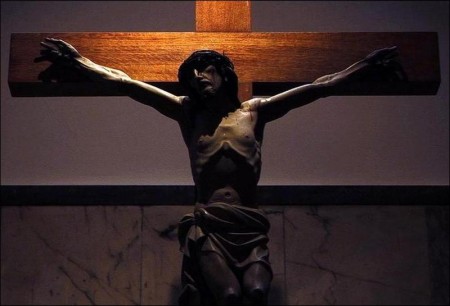For the victims, there’s no such thing as salvation.
“Deliver Us From Evil” is the story of Father Oliver O’Grady, the most notorious pedophile in the history of the modern Catholic Church. Completely lacking in moral fiber and devoid of any sense of shame or guilt, O’Grady used his charm and authority to violate dozens of faithful Catholic families across Northern California for more than two decades. His victims ranged from a nine month-old infant to the middle-aged mother of another adolescent victim.
Despite early warning signs and complaints from several parishes, the Church, in an elaborate shell game designed to avoid liability and deflect criticism, lied to parishioners and local law enforcement, while continuing to move O’Grady from parish to parish.
Over the years, O’Grady successfully exploited mothers and fathers in order to get to their children. His penchant for sexual mayhem was as essential to him as breathing, and internal Church documents prove that since 1973, he raped and sodomized with the full knowledge of his Catholic superiors.
Remarkably, “Deliver Us From Evil” filmmaker Amy Berg tracked down Father O’Grady and persuaded him to participate in the making of her film. O’Grady’s account of his years in various Northern California parishes is chilling and he tells his story without remorse or self-reflection. Also included in the film is never-before-seen footage of the deposition of Los Angeles Cardinal Roger Mahony and his former second-in-command, Monsignor Cain. She also interviews canon lawyer and medieval historian Fr. Thomas Doyle, former priests, lawyers and the abuse survivors themselves.
About the Production
In the course of her work for CBS’ “30 Minutes of Special Assignment,” and later for CNN, filmmaker Amy Berg spent a total of four years investigating pedophile priests. She produced several news stories on the pedophilia scandals within the Los Angeles Archdiocese, and became well acquainted with Cardinal Roger Mahony and the more than 550 priests under his jurisdiction who had abused children without punishment. But nothing quite prepared her for Father Oliver O’Grady.
O’Grady’s offenses surpass those of all of his peers. He is a man with little remorse, whose compulsion has shattered family after family. His twenty years of service in the Church were devoted to two activities: leading his community – and planning his next molestation. He seduced parents to gain access to their children. He violated boys and girls of all ages. He abused a nine month-old infant.
O’Grady was eventually incarcerated and, following the completion of his sentence, deported to Ireland, his birthplace. But Berg, who had been documenting the Church’s unwillingness to release private files on Mahony’s offending priests, discovered that not one of O’Grady’s superiors had faced any punishment or public scandal. Cardinal Mahony himself denied having any significant contact with O’Grady, though documents proved otherwise. Wanting to hear another side of the story, Berg tracked down O’Grady’s telephone number and called him in Ireland.
Even after several conversations with O’Grady, Berg was baffled. “He was completely disconnected from the abuse he inflicted,” she recalls. “He couldn’t remember all of the facts. In some cases he wasn’t even sure he did anything wrong.”
Eventually, after several weekly phone conversations, O’Grady agreed to meet with Berg. She flew immediately to Ireland. “I wasn’t even aware that I would be making a film about this,” she admits. “I wasn’t really scared. I was more curious to meet him. I thought, ‘I have to do this.’”
She spent five hours with O’Grady in the Dublin City Centre. Despite her disgust over O’Grady’s crimes, Berg was surprised to discover a modest and ingratiating man. “It was easy to see how so many parents would never have suspected him,” she says.
O’Grady was forthcoming about his illness and expressed a firm desire to explain himself to his victims. Even more importantly, he was openly critical of Cardinal Mahony and the Church’s Mafia-like practices of perjury, obfuscation and denial. His superiors, O’Grady claimed, chose to ignore his condition rather than confront scandal and jeopardize their own career advancement. They continued to re-assign him to new parishes, a tactic that O’Grady compares to offering an alcoholic more to drink.
Berg instantly recognized in O’Grady the potential for a compelling film, but it wasn’t until four months later that O’Grady called her to say he was willing to go public with his story. After receiving that call, Berg was back in Dublin, shooting ten days’ worth of interviews with the former priest. Despite the feeling of nausea she felt at the end of the week, Berg felt her efforts were worthwhile. “My goal was to shed light on what had been kept hidden for so long, and this was all invaluable information,” she says.
Berg continued her research in the United States, amassing as much information as possible about clergy abuse in California. Among many other testimonies, DELIVER US FROM EVIL includes never-before-seen footage of the deposition of Cardinal Roger Mahony and his former second-incommand, Monsignor Cain. Berg also approached a bevy of former priests, lawyers and psychologists, including canon lawyer and medieval historian Fr. Thomas Doyle, in order to better understand the Catholic faith and the psychology of child abuse.
As she struggled to give shape to the complex dynamics of her story, Berg was sure of one thing: there would be no narrator in the documentary. “I wanted O’Grady and others to speak for themselves. It didn’t seem fair to add my opinion,” she says. She adds, “O’Grady is so shocking and real, I couldn’t have scripted a better villain. It seemed redundant to make that point using narration.”
As a result of Berg’s diligence, DELIVER US FROM EVIL offers eye-opening facts about many aspects of clergy abuse. Why, for instance, is the Catholic Church beset with so many pedophiles? “Because the Church tends to attract poor, disenfranchised children, many of whom are abuse victims themselves,” explains Berg. Unlike other priests, these men grow up within the Church, in a repressive environment that denies, and arrests, normal sexual development – thereby creating a predisposition for pedophilia.
And what about the preponderance of homosexual pedophiles in the Church? “Pure spin tactics,” says Berg. “There are no reports of any kind linking homosexuality to pedophilia. Many offenders abuse both sexes, but the Church resorts to anti-gay propaganda to create a scapegoat.”
And, taking it one step further, the church has openly admitted that they did not respond to complaints involving little girls, citing the priests “normal sexual curiosity”, even when the victims were as young as 5 years old. Church superiors continue to mislead both their parishioners and the public, citing obsolete studies on homosexuality from as far back as 1973. “These are the same people who tell parishioners around the world that condoms do not prevent HIV infection,” says Berg.
While Berg’s research led her in many directions, she found the heart of her film at a national support group meeting called SNAP, the Survivor Network for those Abused by Priests. There, she met several of O’Grady’s now-adult victims. “Most of the survivors didn’t trust me initially because I had spent a week with O’Grady,” admits Berg. “But ultimately they believed in my goal, which was to expose the systemic problems contributing to this epic crisis. They understood that I wanted to show more than one side to this problem.”
While many victims were not ready to participate in Berg’s film due to issues of privacy, Berg found several willing participants, among them Ann Marie Jyono and Nancy Sloan. Like most victims of childhood sexual abuse, Jyono and Sloan were still grappling with the psychological ramifications of their trauma. But Berg found they were also reeling from an additional loss: that of their faith.
Explains Berg, “For people of deep faith, the Church encompasses their whole social and spiritual existence. Their faith is the bedrock of their entire lives. When parishioners are abused, they lose both their belief system and their church community. The effect is shattering. They’re cast out, and many of their lives devolve into a pattern of failed relationships, isolation, shame and sometimes even suicide. This cycle of abuse is far deeper and more destructive than anyone would guess from the abuse ‘scandals’ recounted by newspapers.”
Clergy abuse victims have begun picketing their churches; but Bishops and Cardinals have continuously refused to let them be heard. “Church superiors are terrified of being held accountable. They’d rather ignore the wrongs the Church has committed than sit down and show any compassion,” says Berg. Some of the most appalling moments in DELIVER US FROM EVIL show these superiors denying survivors’ stories, calling them impossible and untrue, despite stacks of evidence to the contrary.
Despite the fact that the statute of limitations has long since expired on most cases, scores of civil sexual abuse cases are being filed against the Los Angeles Archdiocese. Additionally, the Los Angeles District Attorney has requested the full disclosure of the LA Archdiocese “proffers,” the priests’ personnel files that document complaints and misconduct. The Archdiocese has countered these requests with four years of relentless appeals, even though every court, culminating with the United States Supreme Court, has overturned their case. “Under Mahony’s direction, the Los Angeles Archdiocese spends $2 million dollars a month paying high-priced attorneys to prevent the release of incriminating information,” says Berg. “These are millions of dollars being spent for their protection, rather than the victims’ welfare. It shows where their priorities are.”
The Church systematically disowns the abuse victims and marginalizes them further, and victims like Jyono and Sloan continue to be betrayed by the institution that they were raised to trust above all else. The resulting sense of isolation is only exacerbated by a skittish, embarrassed public that relishes scandal, but fails to listen to or comprehend the victims’ perspective. As Berg points out, “If we don’t listen to those who need to be heard, then we are silently judging them.”
Berg hopes that DELIVER US FROM EVIL is part of the solution. “Abuse victims light up when they are given the opportunity to speak out and heal,” she says. “They share a strong need to believe that balance will be restored and that they can change themselves and others. The film is a forum for them to express themselves and move on, and hopefully to give others the courage to do the same.”
The proof lies with Ann Marie Jyono. It took Ann Marie twenty-five years before she told her parents about the abuse she suffered at the hands of O’Grady. Her father, Bob, had converted to Catholicism in order marry his wife. Now he refuses to set foot in a Catholic church. Ann Marie still sometimes attends mass on Sunday, but she cries through every service. For years, she hasn’t been able to visit her parents without bursting into tears.
When Berg finished making DELIVER US FROM EVIL, she received a phone call from Ann Marie’s father. Bob wears a hearing aid and yelled too loudly into the phone, but Berg could tell he was ecstatic. “Amy! Thank you for putting Ann Marie in the film,” he cried. “You’ve changed everything. I have my family back. Ann Marie doesn’t cry anymore. She went from a being a victim to being a survivor.”
Berg relishes that moment. She says, “That’s when I knew we managed to create something of value out of something rotten.”
These production notes provided by Lionsgate Films.
Deliver Us From Evil
Starring: Monsignor Cain, Oliver O’Grady, Cardinal Roger Mahoney, Nancy Sloan, Marie Jyono
Directed by: Amy Berg
Screenplay by: Amy Berg
Release Date: October 13, 2006
MPAA Rating: None.
Studio: Lionsgate Films
Box Office Totals
Domestic: $201,275 (61.5%)
Foreign: $125,930 (38.5%)
Total: $327,205 (Worldwide)


